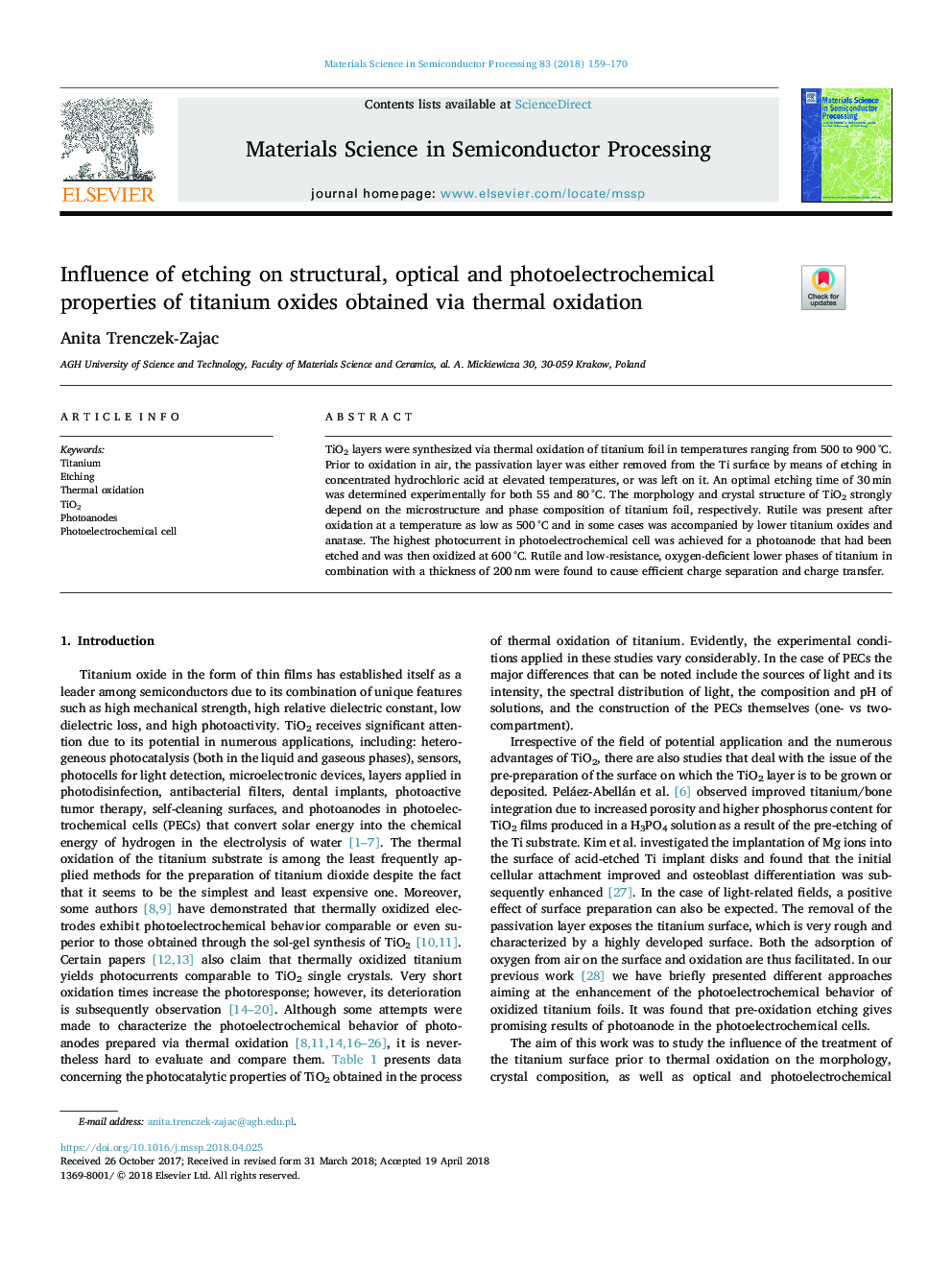| Article ID | Journal | Published Year | Pages | File Type |
|---|---|---|---|---|
| 7117617 | Materials Science in Semiconductor Processing | 2018 | 12 Pages |
Abstract
TiO2 layers were synthesized via thermal oxidation of titanium foil in temperatures ranging from 500 to 900â¯Â°C. Prior to oxidation in air, the passivation layer was either removed from the Ti surface by means of etching in concentrated hydrochloric acid at elevated temperatures, or was left on it. An optimal etching time of 30â¯min was determined experimentally for both 55 and 80â¯Â°C. The morphology and crystal structure of TiO2 strongly depend on the microstructure and phase composition of titanium foil, respectively. Rutile was present after oxidation at a temperature as low as 500â¯Â°C and in some cases was accompanied by lower titanium oxides and anatase. The highest photocurrent in photoelectrochemical cell was achieved for a photoanode that had been etched and was then oxidized at 600â¯Â°C. Rutile and low-resistance, oxygen-deficient lower phases of titanium in combination with a thickness of 200â¯nm were found to cause efficient charge separation and charge transfer.
Related Topics
Physical Sciences and Engineering
Engineering
Electrical and Electronic Engineering
Authors
Anita Trenczek-Zajac,
